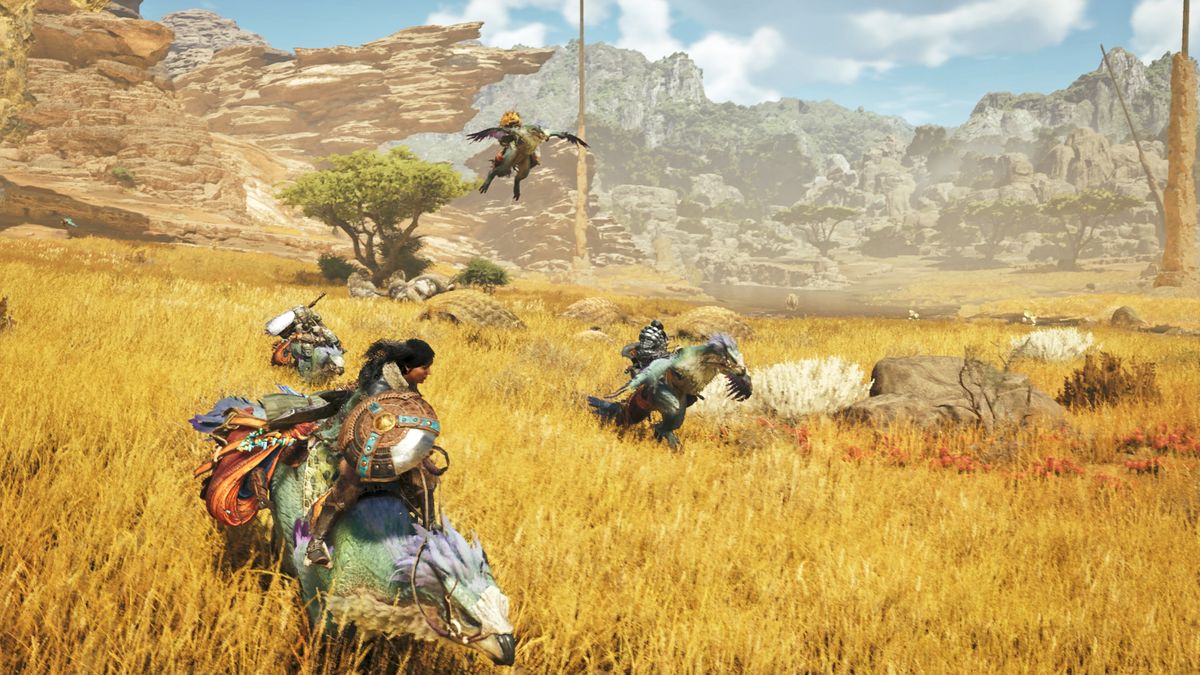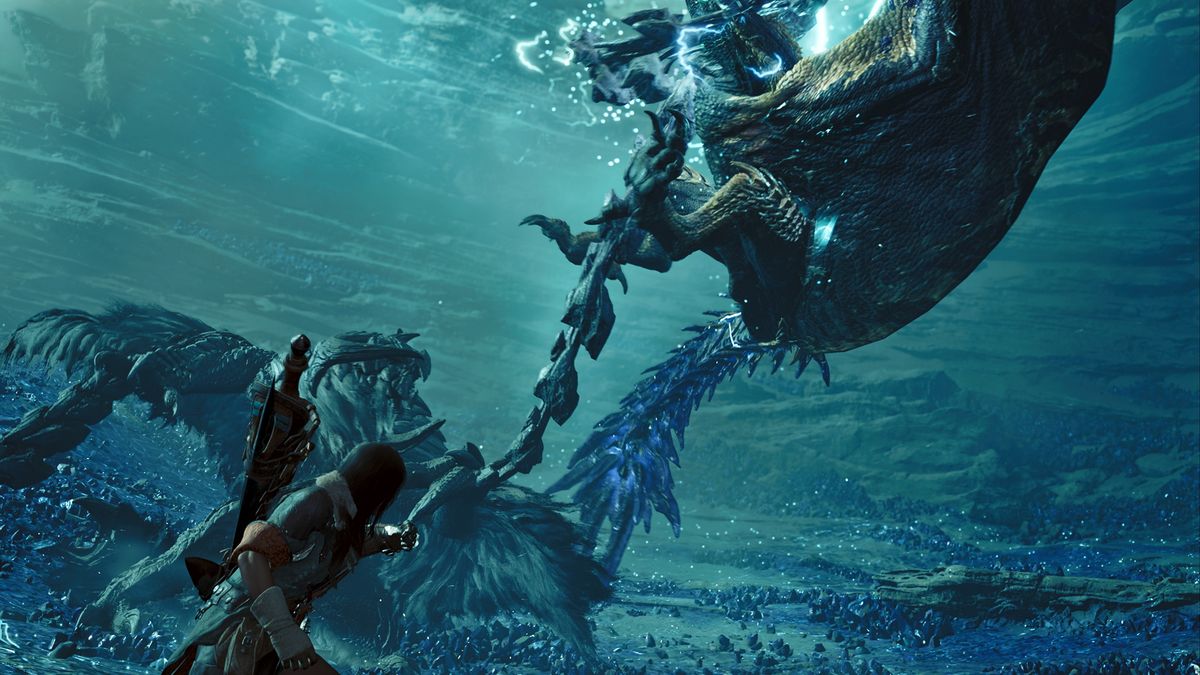The follow-up to Monster Hunter: World is finally here and it’s easily the best in the series so far, with an expanded open world and improved combat. Monster Hunter celebrated its 20th anniversary last year and it seems fair to say it’s never been so popular. It’s always been big in Japan – being almost single-handedly responsible for the success of the PSP handheld console – but ever since the aptly named 2018’s Monster Hunter: World it’s been popular everywhere else as well.
![[Monster Hunter Wilds screenshot of a Seikret]](https://metro.co.uk/wp-content/uploads/2025/02/SEI_241288747-051e.jpg?quality=90&strip=all&w=646)
There’s always been a fairly arbitrary distinction as to what is and isn’t a mainline entry and while Wilds is being positioned by publisher and developer Capcom as the true successor to World, it also takes some influence from 2021’s Monster Hunter Rise – which started off as a Nintendo Switch exclusive.
![[Monster Hunter Wilds screenshot]](https://metro.co.uk/wp-content/uploads/2025/02/SEI_241288950-19e7.jpg?quality=90&strip=all&w=646)
The Monster Hunter series relies on slow evolution rather than sudden change but by the standards of the franchise Wilds is a big step forward in a number of areas, even if its key pleasures, and most obvious faults, remain the same as always. A lot of the new features have been added following discussions with fans, about what they want to see added and changed, but we’re not sure many of them were desperate for Capcom to spend much time worrying about the storytelling. Previous games have had very little plot, but Wilds purposefully has a lot more cut scenes than usual, even if the characters are still paper thin and desperately uninteresting.
The problem with having too much story in Monster Hunter is the same as in the Pokémon games, where trying to justify a society based almost solely on capturing, or in this case killing and resource-mining, wild animals all starts to seem a bit distasteful. Sensibly, Wilds tries not to dwell on that too much, but its story of lost civilisations and previously unknown monsters is not terribly gripping.
The story segments don’t even look particularly good, when they’re not pre-rendered, with background characters teleporting in and out of scenes and an ugly dithering effect straight out of a Switch game. This is strange because the wider game world, and the monsters, look fantastic and are easily the best the series has seen.
While Worlds was open world, Wilds expands the concept further so that the village hub that you return to at the end of a hunt is now a part of that world and not some separate, dislocated location. Not only that but the various biomes are all persistent, so if you bring down a rock formation or farm one area for smaller creatures, they don’t suddenly reset back to their original state if you leave and come back.
If you’re not familiar with the series, the main gameplay loop for Monster Hunter is very straightforward – even if the implementation is not. Although there are now story missions that can focus more on exploration and unique set pieces, generally each one sets you the goal of defeating a particular monster, whose carcass you can then butcher for resources needed to make new armour, weapons, and other items (the game is entirely bloodless, which you could argue is somewhat hypocritical, given what you’re doing).
Often, monsters have to be tracked down or coaxed into the open, and most will end up running off multiple times in a battle. You always enter combat with a bipedal cat-like creature called a Palico, which can offer some assistance in terms of healing items and acting as a distraction, but ideally you want to be playing with up to four people in online co-op, which is where much of the game’s popularity comes from – even though you can also play on your own and with computer-controlled allies.
All of this is the same for Wilds but the one benefit of the new focus on storytelling is a wider range of bespoke missions where it’s not simply ‘go here and kill this.’ A lot of the plot involves searching for a long lost expedition, which leads to unique set pieces where you weren’t initially on the hunt for monsters but they suddenly turn up anyway.
At the same time, some missions are investigations to find where a particular monster is on a map, for later reference, while creature can have different statuses, such as frenzied monsters and tempered monsters (that have survived multiple battles) which are tougher but make the process of fighting the same creature again and again – in order to gain enough resources to craft items – a lot more enjoyable. They also help to alleviate inevitable veteran complaints that Wilds is too easy.
There are two main reasons Western gamers were put off of Monster Hunter for so long, the most obvious being the lack of robust online options, which Worlds fixed. The other is the game’s continuing problem with accessibility. Press the Start button and suddenly the full user interface is revealed, and it looks like the control panel for a jumbo jet.
Wilds makes a much better effort than before with tutorials, many of which pop back multiple times when the game thinks you might have forgotten something – which is very useful. But as shallow as Capcom try to make the learning curve it’s still huge and asks an awful lot from completely new players.































